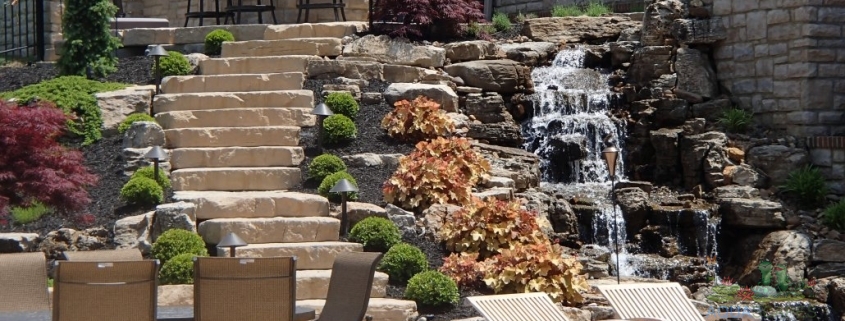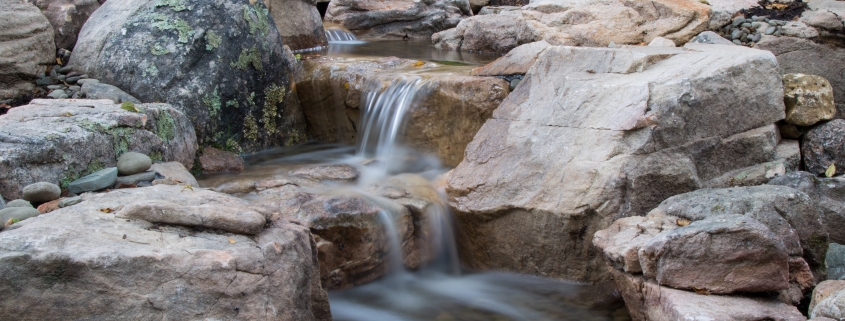Natural Backyard Swimming Pond Installation Tips
These eco-system swimming creations are environmentally-friendly and will protect you.
If you care about the Earth, or if you hate the way your skin smells and feels after swimming in a chlorinated pool, consider going au naturale.
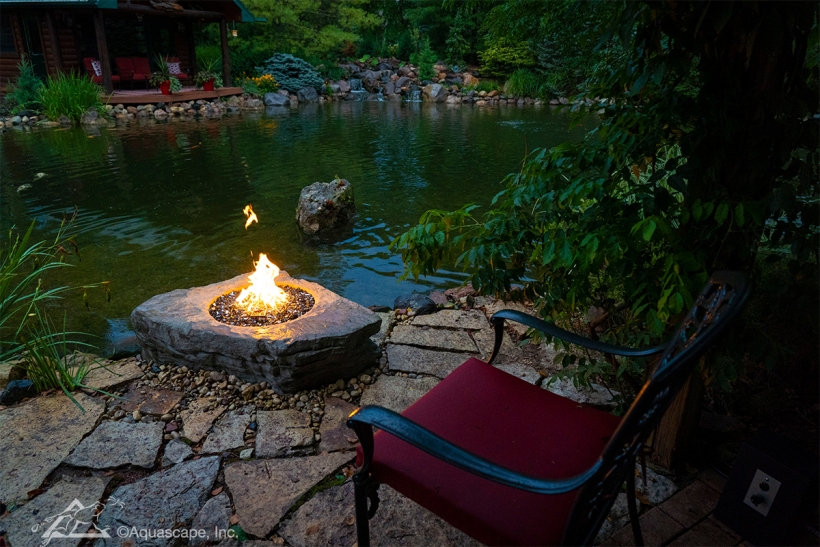
What is a swimming pond?
Split 50/50 to accommodate vegetation and swimming, its been dubbed the swimming pond as the new and improved backyard pond.
The plant section of the pond is around a foot deep, while the swimming area typically ranges from six-and-a-half to eight feet deep. Timber usually separates the two zones.
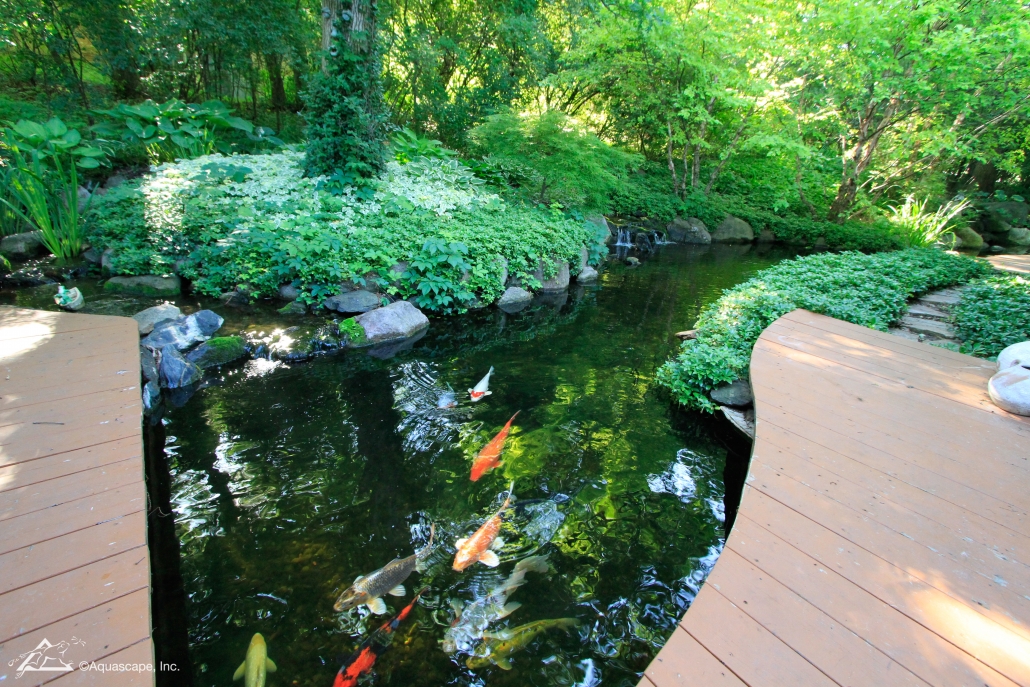
How clean is it without chemicals?
Very. The regeneration portion isn’t just there for ambiance, it’s also the pond’s natural filter.
Plants like flag irises and water lilies keep phosphate levels in check while getting rid of nitrates so there’s no algae. Gravel also plays a role in filtering the pond.
To keep the water moving, go the scenic route with a waterfall or install a small pump — this will also help keep the pond clean.
Bonus: Your natural oasis will attract wildlife (think dragon flies, birds, tadpoles.), which will help control pesky insects. To avoid snakes, the surrounding grass is kept as short as peach fuzz.

Does a swimming pond cost more than a pool?
The upfront payment is more expensive because of the regeneration zone, but the cost per square foot is about the same.
Thinking ahead, the initial cost pays off. Unheated natural ponds evaporate less than normal pools, don’t have energy costs, and you save around $350-500 on chemicals and chlorine.
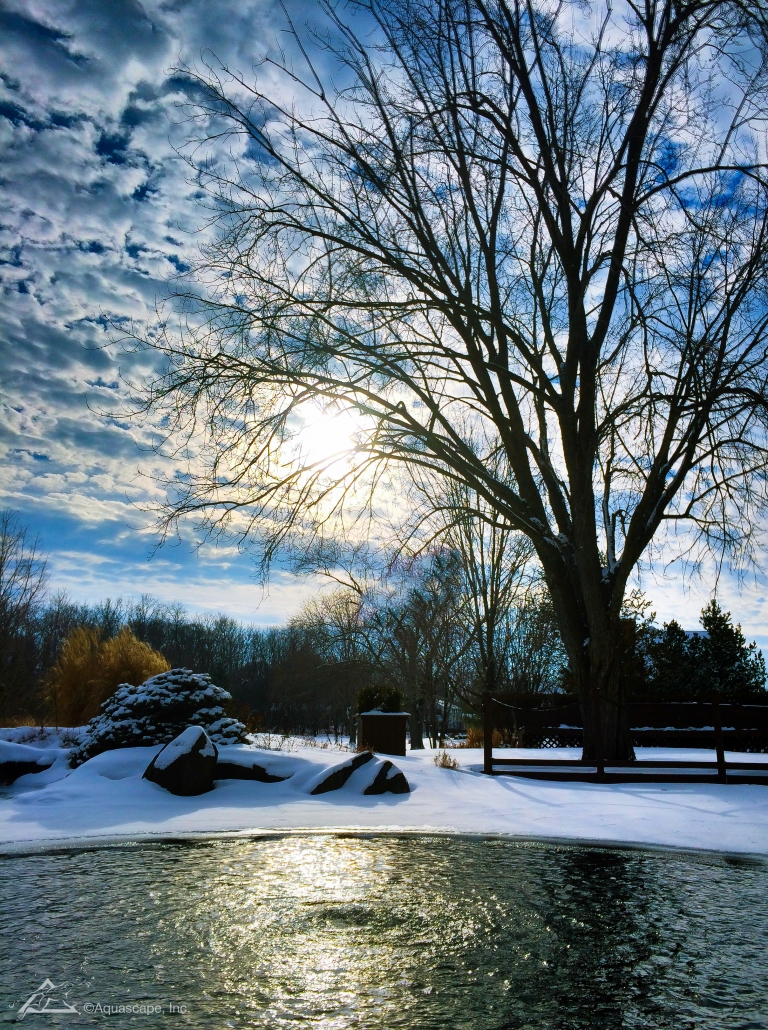
How much does a swimming pond cost?
The design you choose plays into the overall cost of installation!
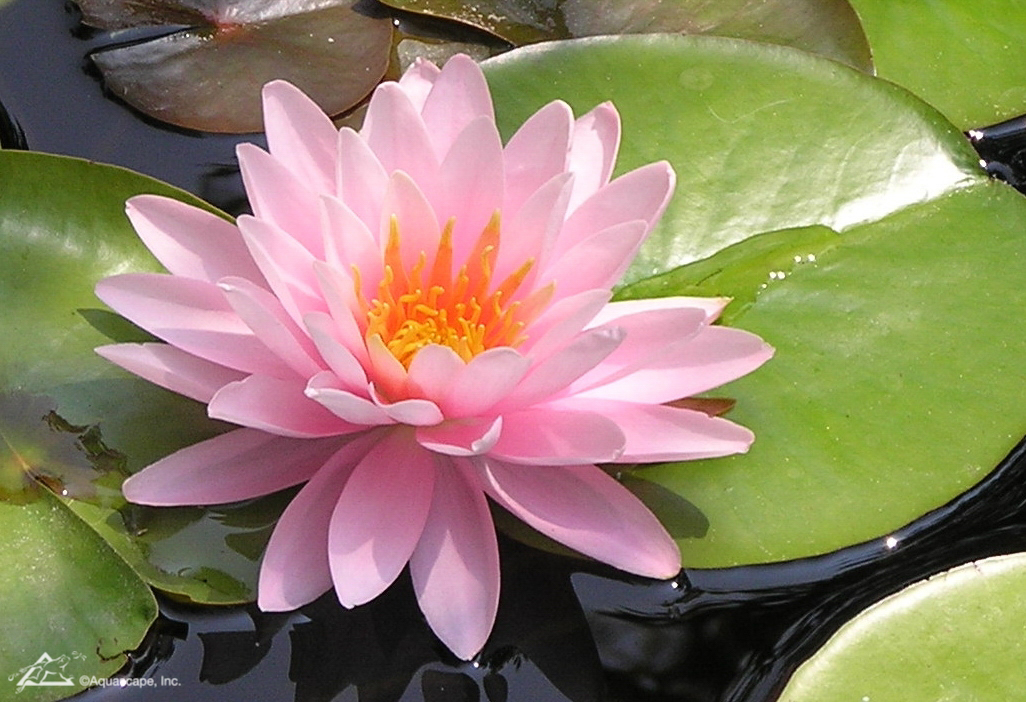
Is it maintenance-heavy?
According to Aquascapes, a pond requires less maintenance than a pool. You don’t have to worry about chemicals, the pond essentially cleans itself, and you can keep it uncovered and full during the winter (ponds make great ice-skating rinks).
Tend to it as you would a garden — and make sure the surface is skimmed.

Is this really something people are doing?
While the trend is still developing in the U.S., Europe is all over natural swimming ponds and pools. The idea originated in Austria and Germany in the 1980s and has evolved from there. Last month, the UK unveiled its first man-made public swimming pond in London!

Long stream with multiple waterfalls flowing to a beautiful pond
Things to consider before buying a garden water feature
Before you invest in a garden water feature to fill up that empty outdoor space and add a wow factor to your property, there are many logistics to consider. It includes right from the supply of water to the general maintenance. Here are some things you should consider first.
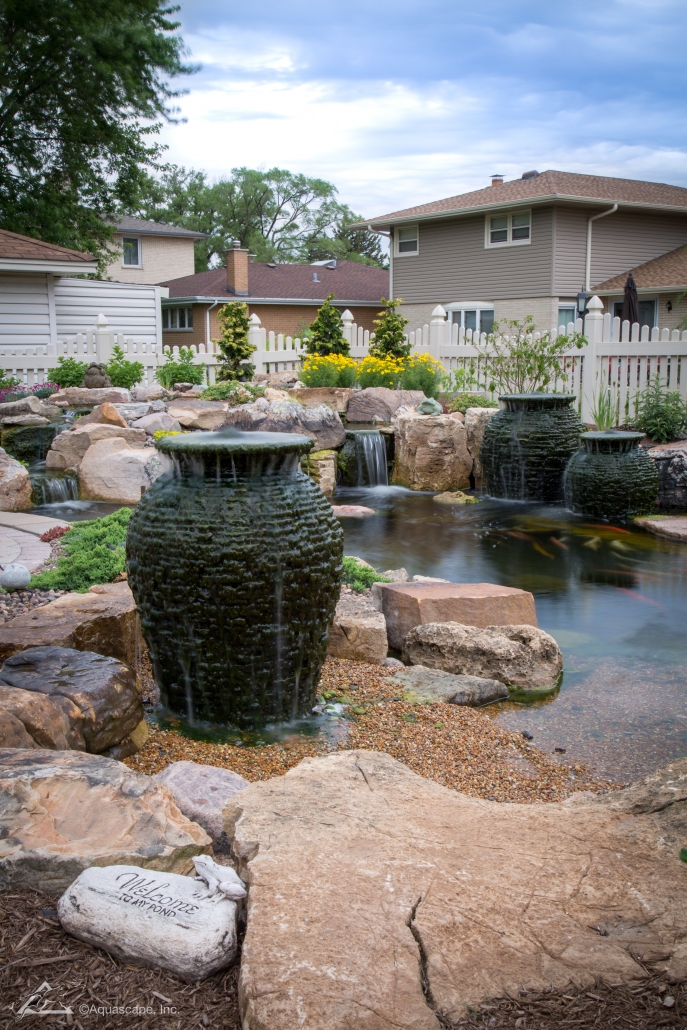
Making water supply available
It is not necessary to always have a water supply. Of-the-shelf water features are self-contained with a need to top them up with water occasionally. If your garden water feature has moving water, you will need to invest in a water pump and an electric supply to drive the pump. Alternatively, you can build a water feature with a solar-powered pump as well. Pretty much all water features with moving water will require a water pump with an electric or solar-powered energy supply to help the pump drive the water.

Maintaining water features
Think about future maintenance and cleaning. Water will get contaminated with dust, algae, leaves, dirt. So you’ll need to know how to drain it, dismantle it and clear out. Thinking about this in advance will help better plan your placement of garden water features. For instance, if it is installed under a tree, leaves are likely to fall and accumulate in the water, which will mean even more maintenance.
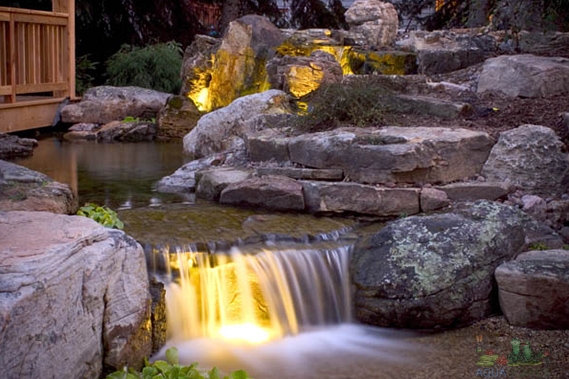
Selecting the type and style of water feature
Consider the background settings to determine the overall style and design aspect of the water features. Classic water features like a fountain or a waterfall may look good if it’s placed amongst plants. If the settings are modern, then water feature style will also have to be modern, like glass, but an older style like cherubs will look out of place in a modern setting. Another option is worth having a look at is lighting the water. In such a case, it’s better to opt for water features with an in-build lighting option else; you may have to spend extra on setting up different lights. Lighting can make the water features look good in all seasons throughout the day.
Decorative Garden Water Features
Water features provide homeowners with a unique and creative way to decorate their outdoor living space. Many homeowners desire the soothing sounds of running water, but are just not ready for a pond or simply can’t afford one. Aquascape’s AquaBasin® system, paired with our handcrafted line of pond decorations and accessories, provides the perfect solution for capitalizing on these small, entry-level water features. Here are some of the decorative garden water features from aquascapes
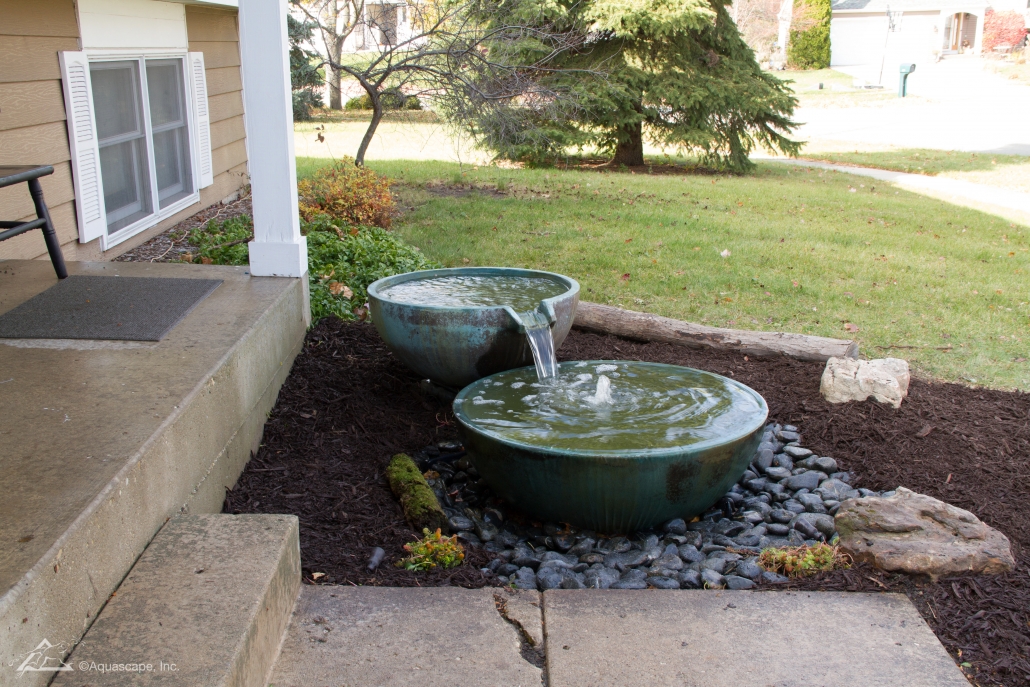
Aquascape spillway bowls
Aquascape spillway bowls and basins can be used in a variety of ways to spice up your front or back yard. Notice the spillway waterfall that provides a relaxing atmosphere to any person nearby! These spillway bowls are not only relaxing and peaceful, but also beautiful to the eyes. Notice the water fountain in the center of this spillway bowl. These beautiful pieces of art have been traced back in history to Rome, and the main reason they have been around so long is because of how they affect those around it. Entrancing yourself with these water basins will become a daily occurrence as you grow accustomed to the nature being brought into your yard!
Spillway bowls typically come with lighting, but be sure they are on a timer so they come on at just the right time! Whether you have a large basin, small basin, or several basins, just one light per spillway bowl will be sufficient.

Aquascape water fountains
Sometimes adding in a fountain can add a focal point to the water garden and provide a relaxing moving-water atmosphere. Watergardens are unique in the aspect that they can be designed in a way that compliments the landscape provided.
Many water garden features don’t have water at all. We call these Fire Fountains. Some fire fountains include water, and some don’t. A few of our water features have the capability of both! When considering which fountain to place inside your water garden, try to think of where your guests will walk around. Are they on the patio? Is the fountain close enough to the water garden and your guests? When we install a new water garden, we consider all aspects of the design to create a feature that will be both pleasant to your guests and your family.

Aquascape water garden lightning elements
Watergarden lighting doesn’t have to be just for waterfalls or for you to see your fish! Many aquascape urns already have lighting inside the feature so that you can enjoy it even at night. Imagine a backyard water feature with the focal point being a stunning display of water, fire, and light. Paradise is just around the corner with our beautiful water features.
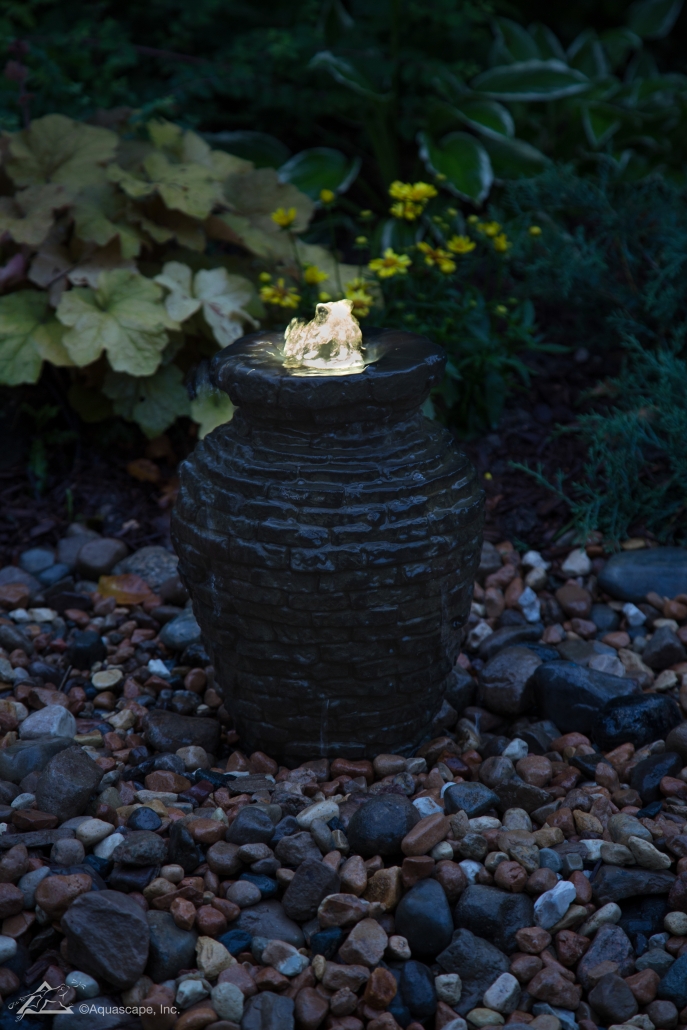
Water Garden Urns
Water garden urns come in a vast array of sizes, colors, shapes, and water flow. These urns are a highlighted product by aquascapes for one reason; they’re beautiful. What better reason for impressing your guests is there?
Why should you have water features in your garden
Any water features can easily mix and blend with your backyard. You can add a water pond, artificial river, or fountain in your garden, and it will immediately become a focal point of your garden or backyard. Water features can be suited to large as well as small gardens. They can change the complete ambiance of your backyard.

Water introduces calmness in your garden.
A water feature such as a fountain or a waterfall creates a tranquil and serene sound that helps calm down your mind. A garden with water features is the best place to unwind yourself after a hectic workday. A garden with water features provides a small piece of heaven right into your backyard. You can add other water garden features like decorative stones, water plants, and flowers for more therapeutic effects.

Adding water features makes your garden look bigger.
The reflective properties of water tend to make the spaces look bigger. For more enhanced effects, you can use dark colours for water features like waterfall stones or fountains. Another way to enhance this effect is by using the underwater lights at night time. You can save on energy bills on these lights by using solar-powered lights that charge during the day to glow at night.
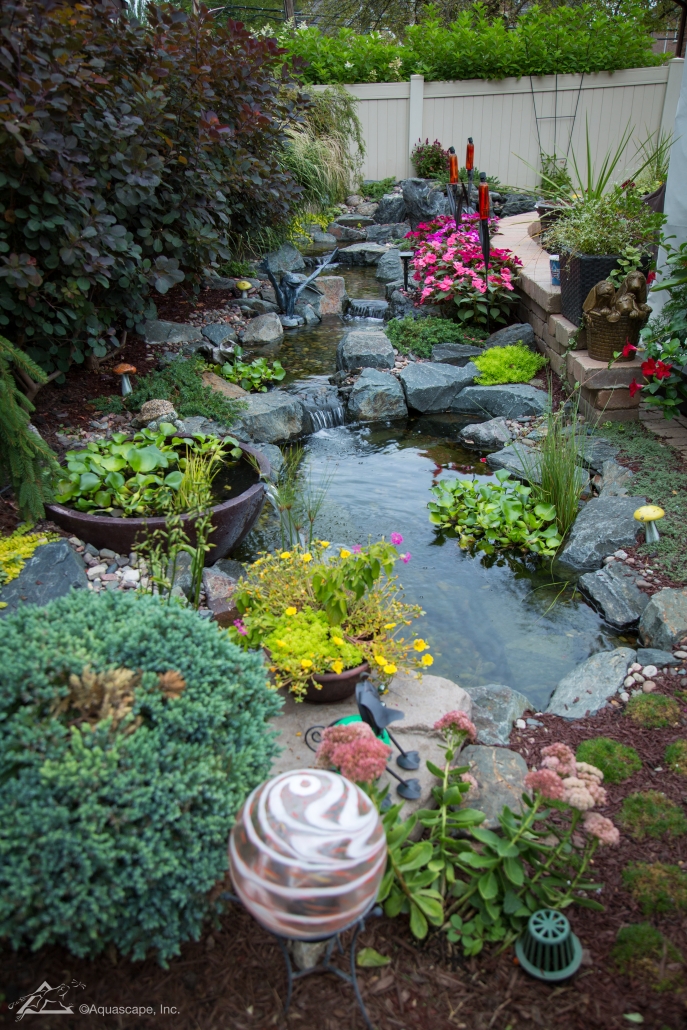
Having water in the garden helps to attract wildlife.
Birds and other small wildlife animals like frogs frequent your garden when it has sources of water. The garden pond or fountain acts as a source of fresh drinking water for birds. A garden pond can also attract small aquatic animals. You can also add fishes in garden ponds to create a natural aquatic habitat.

Maintenance of water features is easy.
Water features such as ponds may require regular cleaning up. However, the cleaning task is a lot easier. Also, the water machinery installed like water pumps or water filters needs to be maintained regularly for the proper function of the water features and to prevent any malfunctioning and blockages. These tasks can be easily carried out at home without incurring any additional costs. It also provides a very indulgent activity helping to take away your mind from work-related stress.

